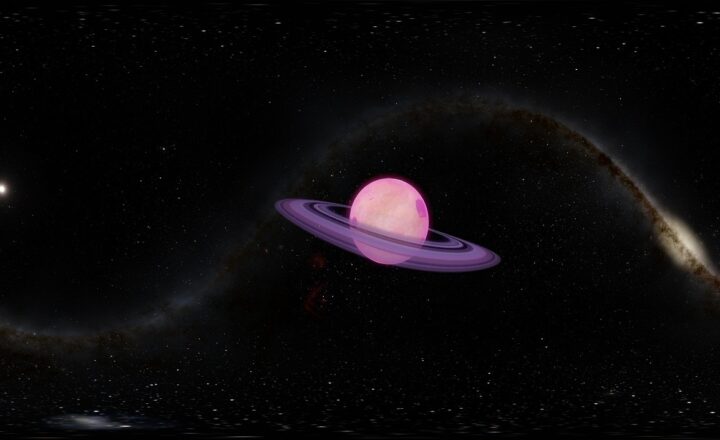How Earth-Like Planets Could Form and the Conditions Needed for Life
November 12, 2024

The quest to understand how Earth-like planets form and the conditions that could foster life has captivated scientists and astronomers for decades. With advancements in technology allowing us to explore exoplanets—planets outside our solar system—scientists are piecing together the intricate jigsaw puzzle of planetary formation, habitability, and the possibility of extraterrestrial life.
1. The Formation of Planets: A Cosmic Dance
The creation of planets begins in a protoplanetary disk—a rotating disk of gas and dust surrounding a newborn star. Over time, particles in this disk collide and stick together, forming larger bodies called planetesimals. These planetesimals continue to collide, gradually accumulating mass to create protoplanets.
Key Stages in Planet Formation:
- Accretion: The process through which dust and gas coalesce to form planetesimals and protoplanets.
- Differentiation: As protoplanets grow, their interiors heat up, causing denser materials to sink and lighter materials to rise, leading to the formation of a layered structure similar to Earth’s core and mantle.
- Clearing the Orbit: The young planet clears its orbit by colliding with and absorbing smaller bodies, eventually becoming what we recognize as a planet.
These processes can take millions of years, but the outcome can yield rocky, Earth-like planets, which are essential for the pursuit of life.
2. Essential Conditions for Life
To support life as we know it, a planet must meet several critical conditions. While the specific requirements may vary depending on the type of life, there are fundamental aspects that contribute to habitable environments:
- Liquid Water: Water is considered the universal solvent and is paramount for biological processes. A planet must be located in the habitable zone, or Goldilocks zone, where temperatures allow water to exist in liquid form on its surface.
- Atmosphere: A suitable atmosphere protects a planet from harmful space radiation and retains heat. The atmosphere must contain essential gases, such as oxygen or carbon dioxide, that support life.
- Stable Climate: A planet with a regulated climate can sustain life. Factors such as axial tilt and orbital eccentricity play a significant role in creating favorable conditions over geological timescales.
- Chemical Ingredients: Essential elements such as carbon, hydrogen, nitrogen, oxygen, phosphorus, and sulfur (often referred to as CHNOPS) must be present to create complex organic molecules necessary for life.
These criteria help scientists determine prospective planets that could potentially harbor life.
3. The Role of Stellar Systems
The type of star a planet orbits significantly impacts its ability to support life. The following aspects are vital for understanding how star systems can influence planetary habitability:
- Star Type: Stars vary in size, lifespan, and brightness. For example, red dwarf stars are more common in the universe and can host stable planets in their habitable zones, but they may also subject those planets to significant solar flaring.
- Orbital Stability: A planet’s orbit should be stable to maintain consistent climate conditions. This stability is influenced by the mass and arrangement of other planets within the same system.
- Planetary Migration: The movement of planets during formation can significantly affect habitability. Some planets may be displaced from their original orbits into the habitable zone, while others might drift too close to their stars, facing extreme temperatures.
Understanding the dynamics of a star and its planets is crucial in the search for Earth-like worlds.
4. Discoveries of Exoplanets and Their Potential for Life
In recent years, astronomers have made groundbreaking discoveries regarding exoplanets that share similarities with Earth. Notable missions like NASA’s Kepler Space Telescope and the Transiting Exoplanet Survey Satellite (TESS) have identified thousands of exoplanets, some of which lie within their stars’ habitable zones.
Highlighting Some Earth-Like Exoplanets:
- Kepler-186f: This planet is located about 500 light-years away in the constellation Cygnus. It is roughly the same size as Earth and resides within the habitable zone of its star, making it a prime candidate for further study.
- Proxima Centauri b: Orbiting the closest star to our solar system, this exoplanet lies within the habitable zone and may have potential for liquid water on its surface, although its proximity to a red dwarf star poses challenges due to stellar radiation.
- TRAPPIST-1 System: This system, located around 40 light-years away, contains seven Earth-sized planets, three of which are situated in the habitable zone. These intriguing worlds are targets for further exploration due to their potential for supporting life.
The search for life beyond our planet requires a comprehensive approach that involves studying solar systems for Earth-like conditions and understanding the factors that define habitability.
5. The Future of Planetary Exploration
As technology advances, the hope of discovering life on other planets becomes increasingly attainable. Future missions aimed at understanding planetary atmospheres, compositions, and potential biosignatures will play a crucial role in our quest. Some exciting prospects include:
- James Webb Space Telescope: Launched in December 2021, JWST will analyze the atmospheres of distant exoplanets for the presence of water, methane, carbon dioxide, and other signs of habitability.
- Mars Missions: Continued exploration of Mars, including sample returns and potential human missions, will help us understand past life-supporting conditions within our own solar system.
- Interstellar Missions: Future missions could explore nearby star systems, leveraging technologies like break-through propulsion systems, propelling us toward distant exoplanets with the ultimate goal of assessing their potential for life.
Conclusion
The search for Earth-like planets and the conditions necessary for life is one of the most exciting frontiers of modern science. Understanding the processes that lead to planetary formation, the essential requirements for habitability, and the ongoing discoveries of exoplanets contributes to our growing knowledge of the universe—a universe teeming with possibilities for life beyond our own. As we continue to explore and innovate, the dream of finding extraterrestrial life may one day become a reality, reshaping our understanding of our place in the cosmos.








